You don’t have to love anime or manga to have an amazing time in Japan: it’s a foodie’s paradise!
I’ve been to Japan 5 times in the past 6 years, and its food scene played no small part in that. Whether you’re planning to go as a tourist or as a working holiday maker (learn about the Japan WHV), make sure to try as many of these foods as you can! Many of them can’t be found outside Japan, or even if they can, they’re likely much more expensive.
For convenience, I’ve grouped everything from a scale of ¥ to ¥¥¥¥, so there is something for every taste and every budget.
¥ – under 1,000 yen
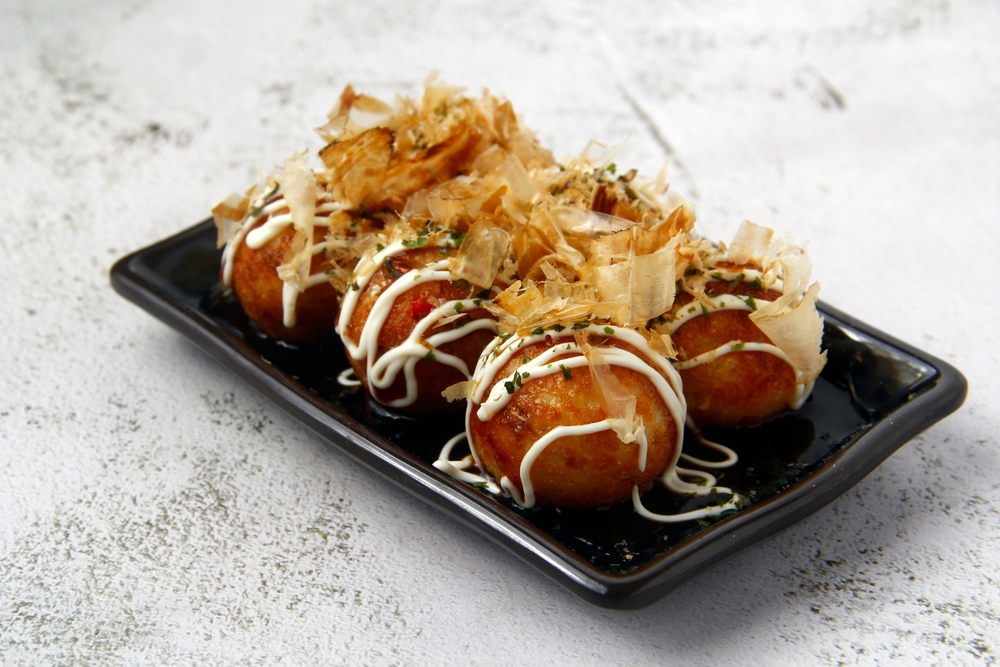
Takoyaki (octopus balls) ¥
- Tako means octopus and yaki means grill, so a takoyaki is a grilled octopus ball. The translation may not sound great, but trust me when I say they’re delicious. You can get a set of 6-8 steaming balls (of dough with a piece of octopus inside) for just a few hundred yen, so it makes for a perfect appetizer or snack.
- Name written in Japanese: たこ焼き
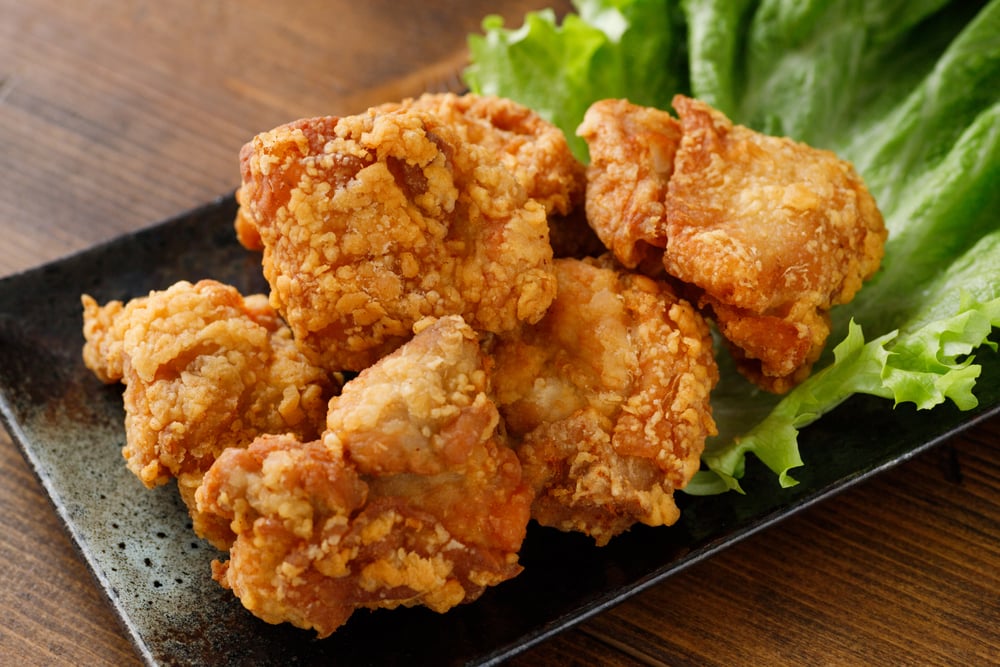
Karaage (fried chicken) ¥
- Karaage, Japanese fried chicken, is juicy and tender beyond compare. You will never see fried chicken in the same way again. Believe it or not, some of the best fried chicken is served at convenience stores (konbini). Try a few chains and decide which one is your favourite!
- Where to eat it: any convenience store (7 Eleven, FamilyMart, Lawson)
- Name written in Japanese: 唐揚げ
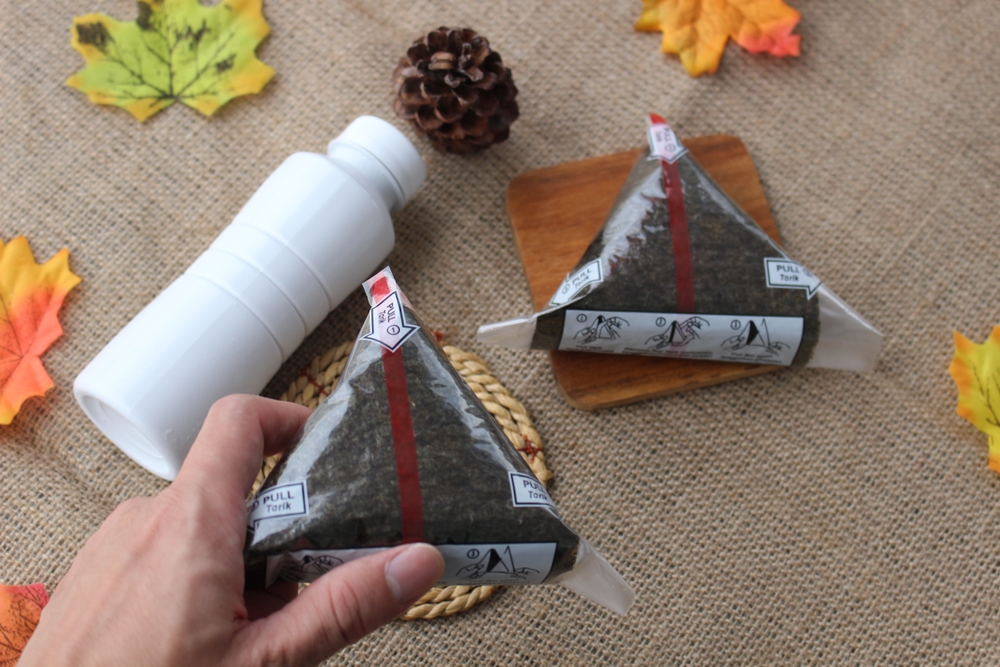
Onigiri (rice triangles with filling) ¥
- Onigiri are the classic seaweed-wrapped rice triangles with various fillings inside. These too can be found at any convenience store at very good quality, and they are an absolute must-try breakfast item. When unwrapping an onigiri, look at the numbered instructions on the packaging very carefully, because they are wrapped in a way to keep the seaweed from the rice, to preserve the seaweed’s crispiness. If you unwrap it incorrectly, the seaweed will get torn up.
- Where to eat it: any convenience store (7 Eleven, FamilyMart, Lawson)
- Name written in Japanese: おにぎり
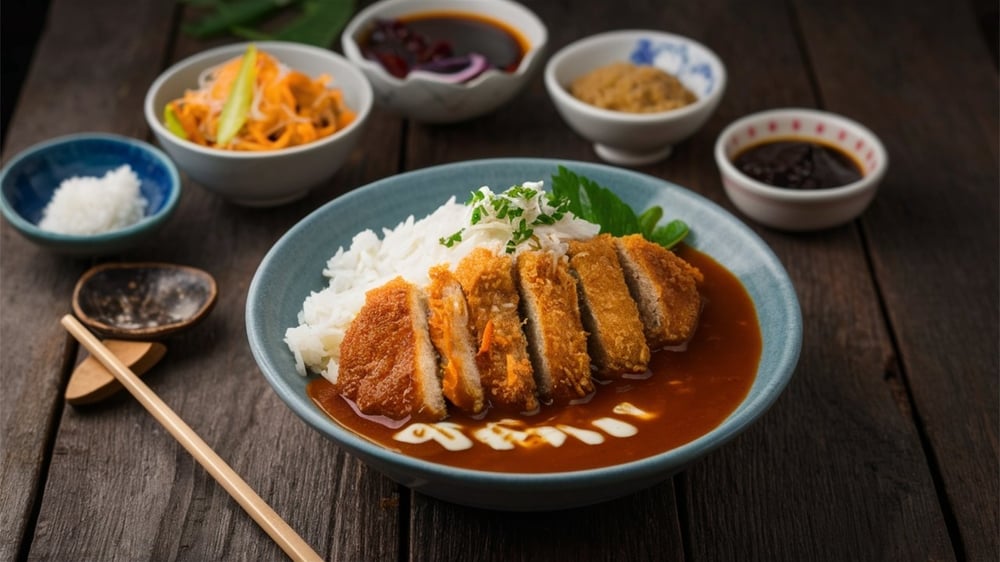
Japanese curry ¥
- Japanese curry is quite distinct from other types. It tends to be sweeter and milder, though some shops do offer various spice levels. It is always served with rice, and often with chicken or pork cutlet (katsu). Give it a taste and see how it compares to Indian and Thai curries!
- Popular chain: CoCo Ichibanya
- Name written in Japanese: カレー
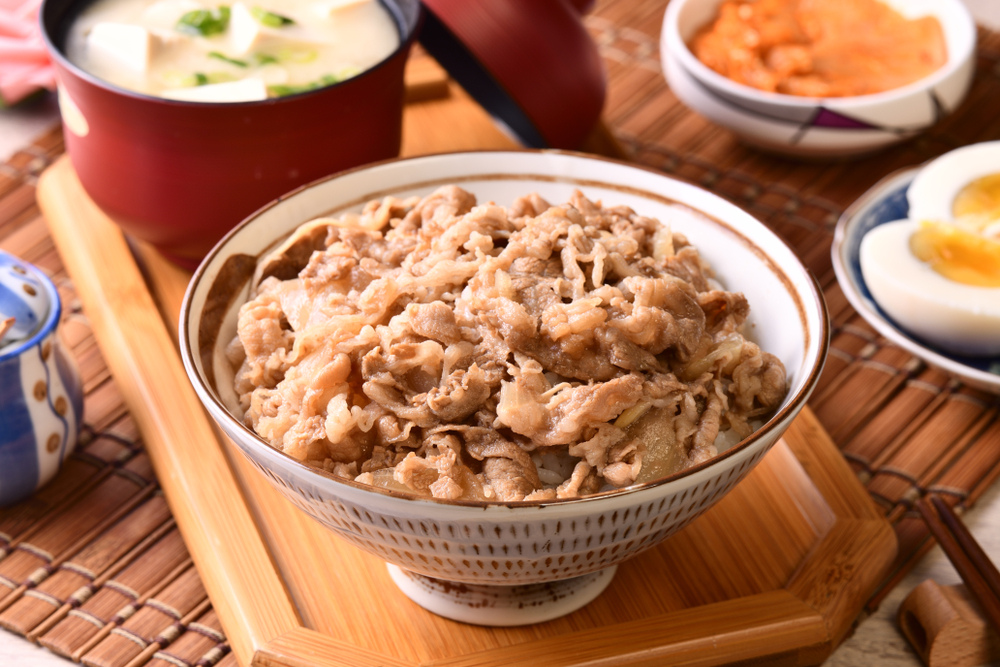
Gyudon (beef rice bowl) ¥
- Gyu means beef and don means bowl of rice. So a gyudon is a beef rice bowl. It consists of thinly sliced marinated beef on top of a bed of steaming rice. It is considered by locals to be an affordable fast food, but foreign visitors are nonetheless likely to be surprised by its delicious taste and high quality.
- Popular chains: Sukiya, Yoshinoya, Matsuya
- Name written in Japanese: 牛丼
While it may be tempting to do so, do not walk around while eating something, as it is a faux pas in Japan. Read
this article on a few others to avoid.
¥¥ – under 2,000 yen
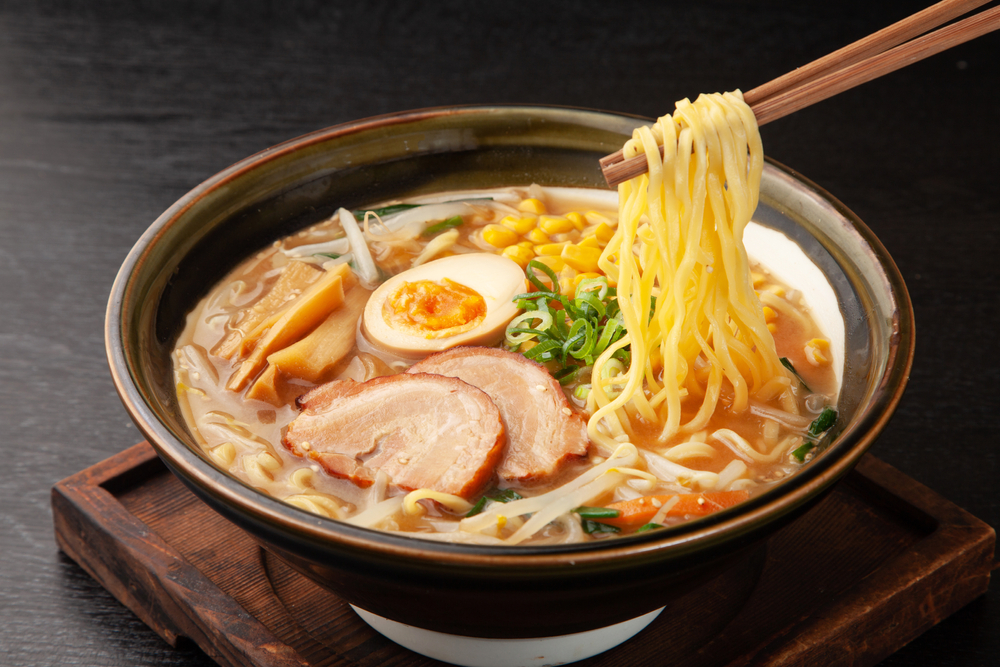
Ramen (soup noodles) ¥¥
- This dish needs no introduction. Ramen is also sometimes referred to in Japan as Chinese noodles (中華そば chuka soba) for their Chinese origins. However over the decades, Japanese ramen has been greatly adapted to local tastes and become a national comfort food. A few common styles of broth include salt (shio), soy sauce (shoyu), pork bone (tonkotsu), and chicken (tori paitan). Try a few and see which one you like most.
- Popular chains: Ichiran Ramen, Ippudo
- Name written in Japanese: ラーメン
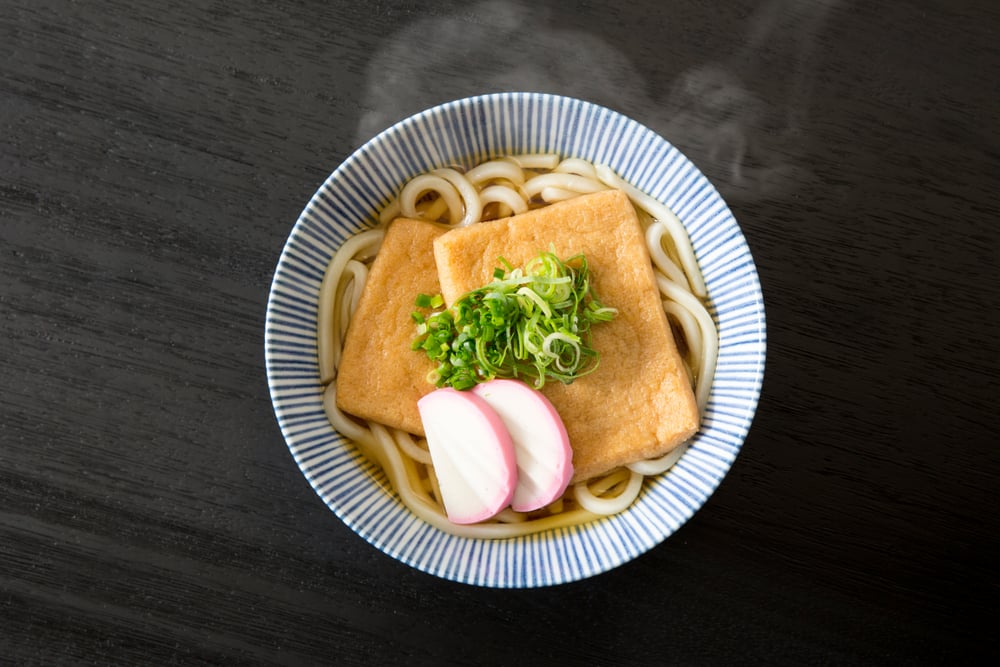
Udon (thick soup noodles) ¥¥
- Udon is thick soup noodles. Unlike ramen, udon broth is almost always clear and light. The presentation is kept simple, and the noodles are often accompanied by shrimp or vegetable tempura (deep fry) on the side. It is a hot dish perfect for consumption on a chilly day.
- Name written in Japanese: うどん
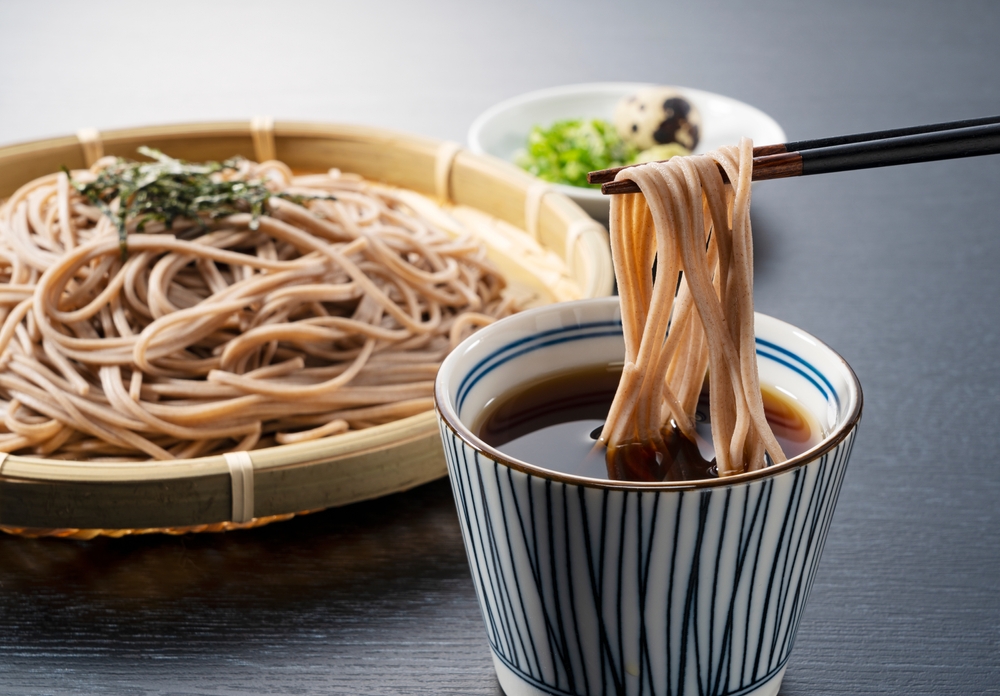
Soba (thin buckwheat noodles) ¥¥
- The last noodle on this list is soba, thin buckwheat noodles. Like udon, this dish is a healthier alternative to ramen. Soba can be served with or without broth. With broth, it is presented in a similar fashion to udon (accompanied by tempura or duck meat). Without broth, the noodles are cold and meant to be dipped in soy sauce and wasabi before every bite.
- Name written in Japanese: そば
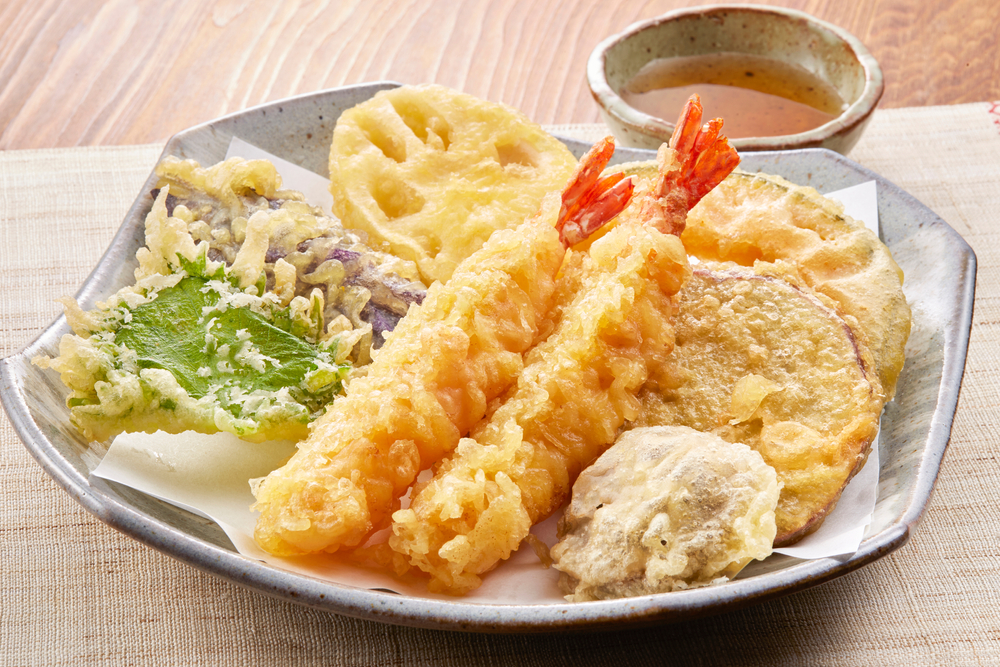
Tempura (deep fry) ¥¥
- Both udon and soba are often served with tempura, which is the generic term for foods fried in the Japanese style. The batter is light and crispy. The most common ingredients for frying are shrimp and vegetables, although technically anything can be fried. I recommend trying at least shrimp and vegetable tempura, as those are the classics.
- Name written in Japanese: 天ぷら
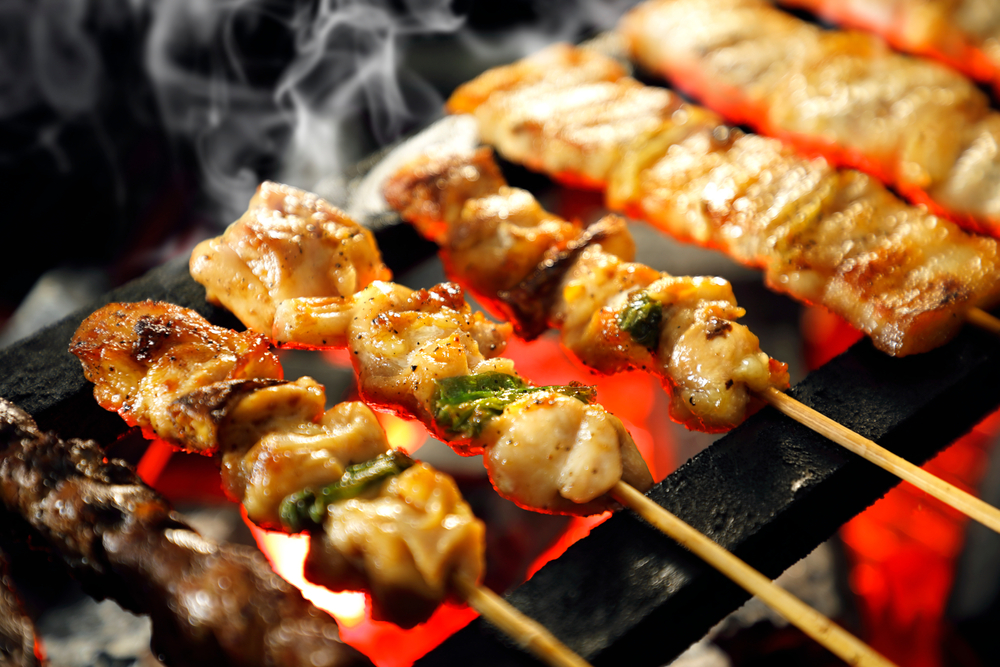
Yakitori (grilled skewers) ¥¥
- Yaki means grill and tori means bird/chicken, so yakitori is grilled chicken. All yakitori items are served on a skewer and the selection is huge. You can get skewers of chicken (various cuts), pork, vegetables, and much more. Since each skewer is small, this is a great way to try many different flavours for not too expensive. Go with a couple of friends and share some beers too.
- Popular chain: Torikizoku
- Name written in Japanese: 焼き鳥
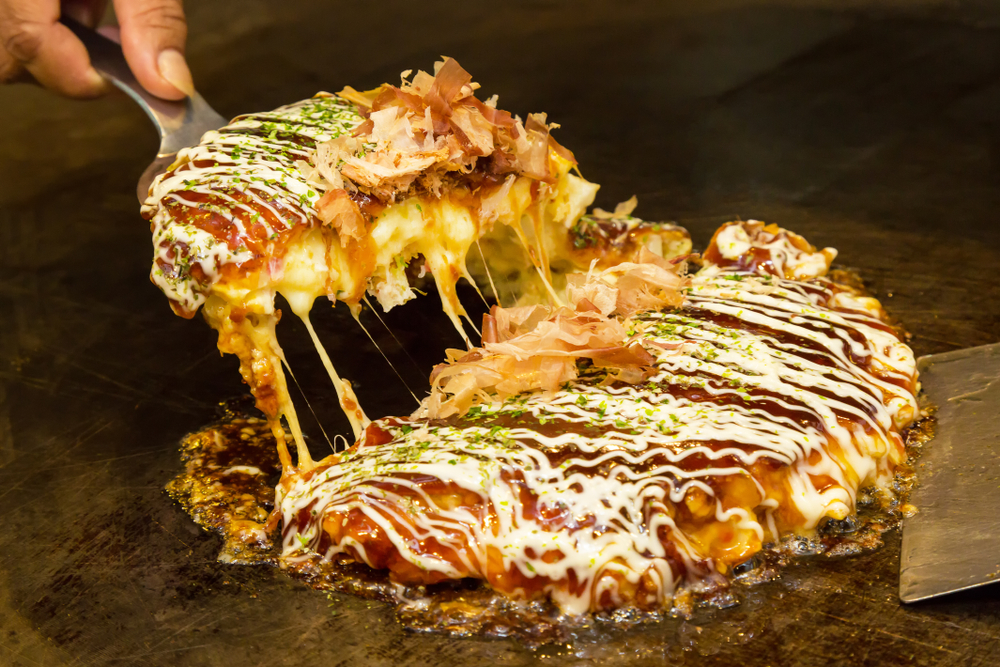
Okonomiyaki (Japanese pancakes) ¥¥
- Okonomi roughly means what you like, and yaki means grilled. Put it all together, okonomiyaki are saucy Japanese pancakes that contain various ingredients all mixed or layered together. If you like takoyaki (octopus balls), you are sure to appreciate this too, as the flavours and toppings are quite similar. It’s almost impossible to find good okomiyaki outside of Japan, so this is a must-try.
- Name written in Japanese: お好み焼き
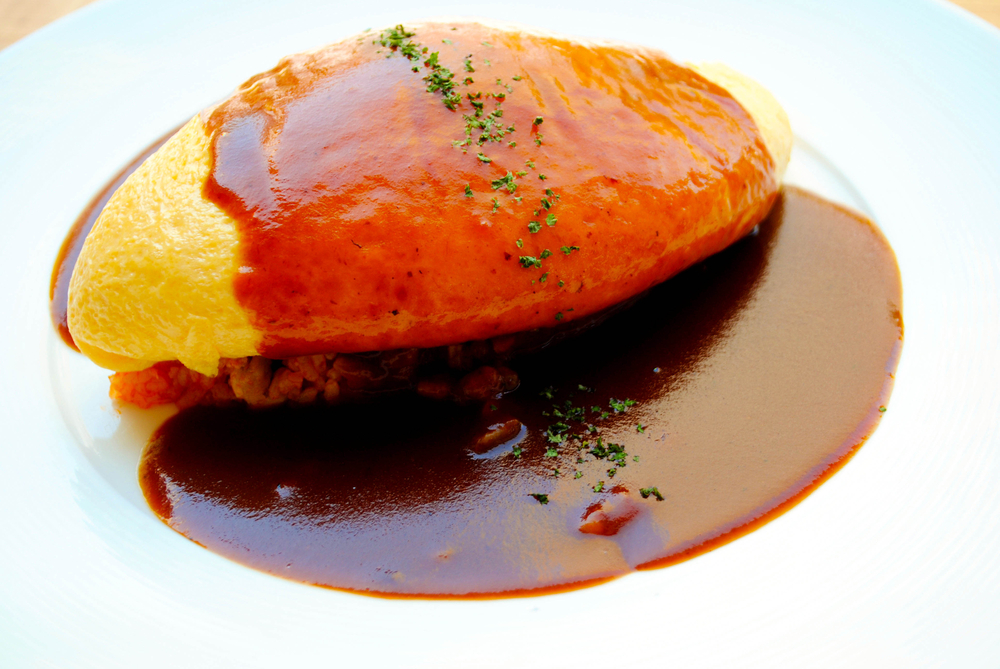
Omuraisu (omelette rice) ¥¥
- Omuraisu is actually an English loanword. Omu refers to omelette, and raisu means rice. So together they make omelette rice! The dish consists of fried rice topped with a thin blanket of tender omlette-style eggs. The chef then drizzles a decadent demi-glace sauce over it all. It’s a dish that is very popular among Japanese kids, but I think many foreign adults (like myself) would appreciate it just as much.
- Name written in Japanese: オムライス
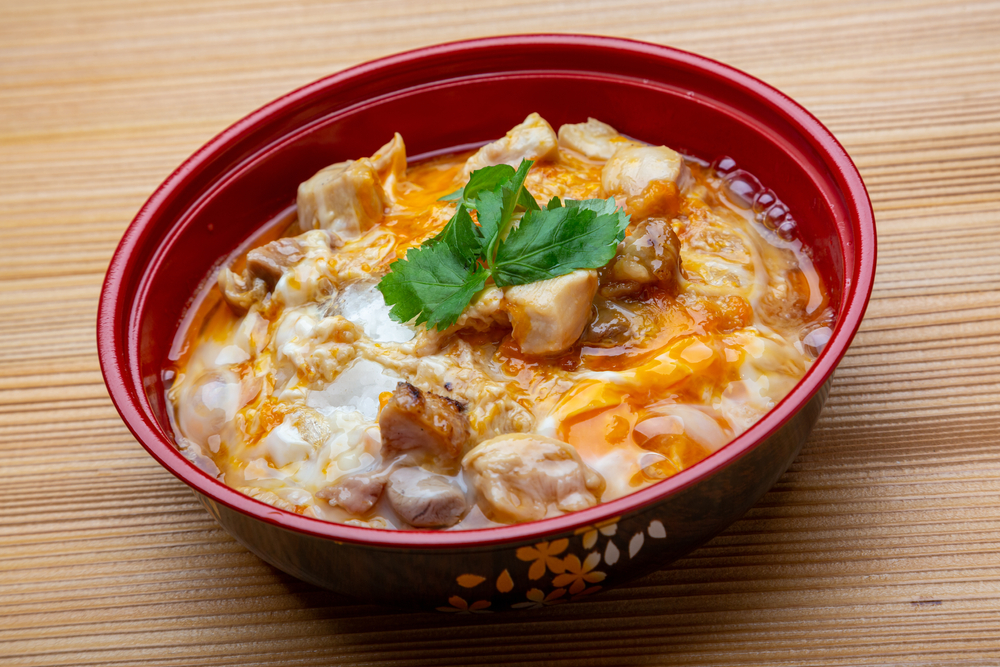
Oyakodon (chicken and egg rice bowl) ¥¥
- Oya means parent, ko means child, and don means rice bowl. Can you guess what this is? Thankfully it’s nothing morbid. An oyakodon consists of a bowl of rice topped with pieces of chicken atop a blanket of tenderly beaten eggs, all flavoured with a savoury sauce. Now you can start to understand where the parent (chicken) and child (egg) reference comes from. It’s a healthy and nourishing dish that is sure to warm you up.
- Name written in Japanese: 親子丼
¥¥¥ – under 5,000 yen
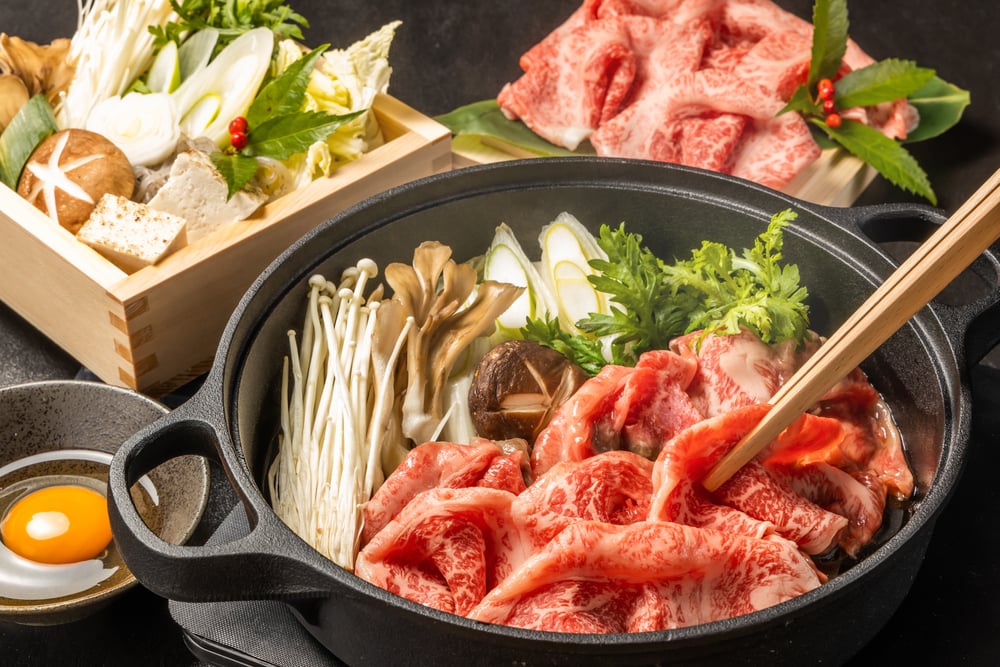
Sukiyaki (Japanese hot pot) ¥¥¥
- Sukiyaki is a type of Japanese hotpot consisting of meat and vegetables in a boiling broth. Once they’re cooked, you can dip the meat into a sauce that consists of soy sauce mixed with a raw egg to cool and tenderise it. Don’t worry though, eggs and hens in Japan are handled differently to minimize risk of salmonella. It is perfectly normal to consume raw eggs in various Japanese dishes.
- Name written in Japanese: すき焼き
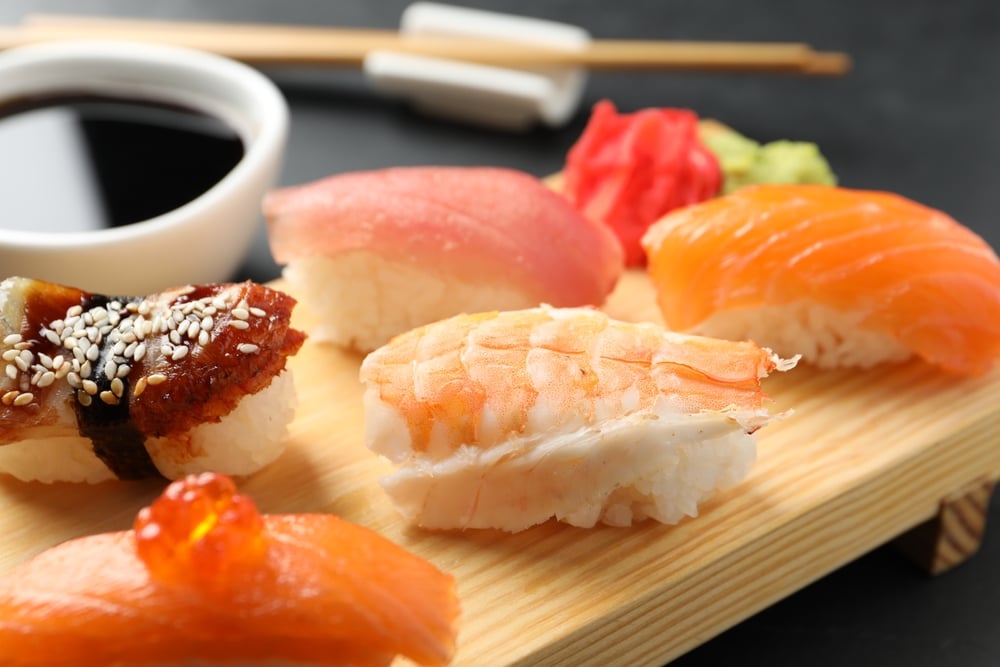
Sushi ¥¥¥
- You’ve probably already had sushi and sashimi back home, but the quality and diversity of seafood in Japan is unrivalled. The price range is big. You can find cheaper options in supermarkets and small shops, or sit down at a reputed establishment for a fancier meal. In general, however, Japanese people don’t eat sushi as often as foreigners think, as it is more of a meal for special occasions.
- Name written in Japanese: 寿司
¥¥¥¥ – more than 5,000 yen
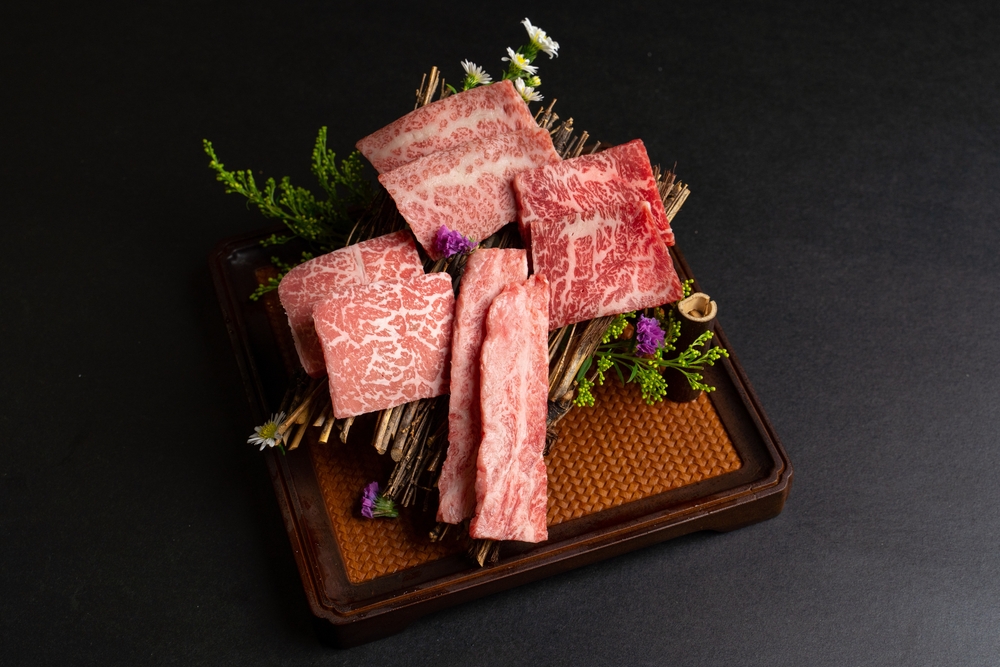
Wagyu (Japanese beef) ¥¥¥¥
- Wa means Japan and gyu means beef, so wagyu means Japanese beef. Don’t be fooled though, because not all beef sold in Japan is wagyu. Wagyu designates indigenous breeds that are raised to produce only the finest quality beef with consistent marbling. Wagyu is the general name for all such prestigious bovine breeds, but each region in Japan has its own specific breed and name (e.g. Kobe beef is just one type of wagyu beef). Whichever kind is served to you, it won’t be cheap, but it may still very well be worth the pretty penny (although lunch service is usually cheaper).
- Name written in Japanese: 和牛
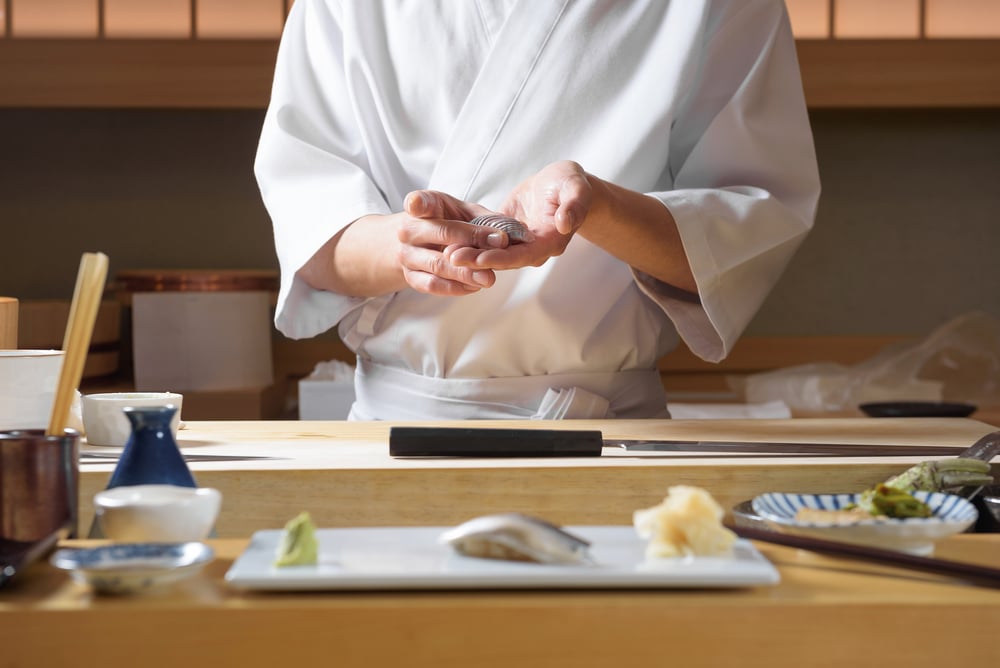
Omakase (prix fixe sushi) ¥¥¥¥
- Omakase is essentially a prix fixe sushi dining experience. There is a set menu featuring the chef’s selection of fish of the day, with the 10+ mini courses served to you one at a time. You’ll usually be seated at the bar as the chef places each piece directly onto your plate. Omakase restaurants almost always require a reservation (lunch service is usually cheaper), so be sure to do your research in advance. It is an upscale experience that you likely won’t forget.
- Name written in Japanese: お任せ












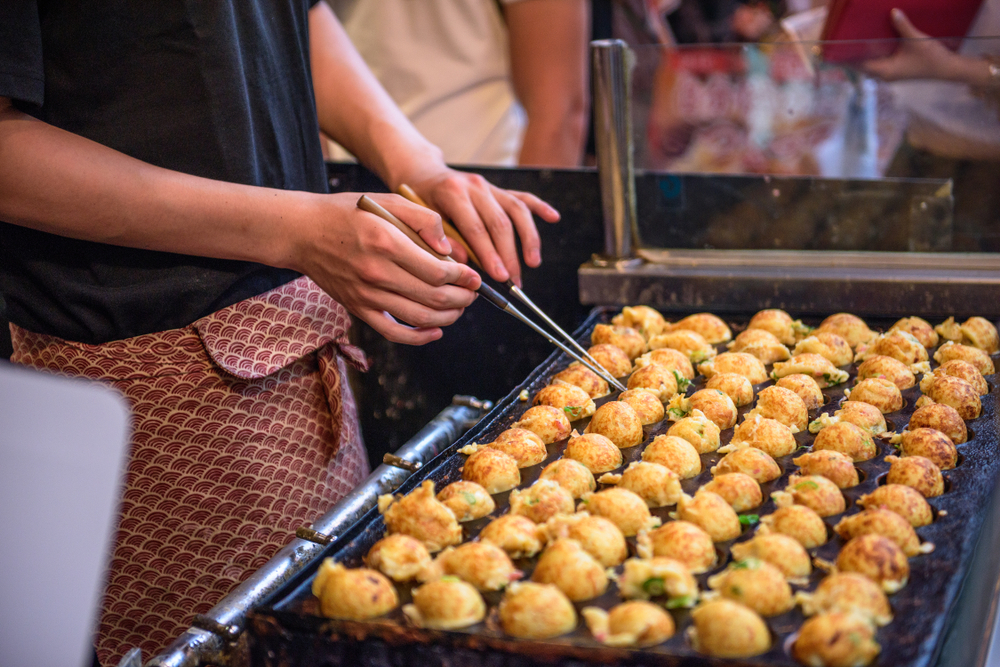





















(1) Comment
I’ll look for Japanese Pancake and try it. It looks so yummy 😋!
{{like.username}}
Loading...
Load more